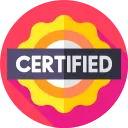FREE
daily Instructor: Dr. Craig DavidCourse Overview
Understanding Heavy Equipment Safety Regulations and Standards
Federal and State Regulations
- In-depth analysis of OSHA (Occupational Safety and Health Administration) regulations pertaining to heavy equipment operation, maintenance, and inspection.
- Detailed examination of specific OSHA standards such as 1926 Subpart O (Motor Vehicles, Mechanized Equipment, and Marine Operations) and their practical implications.
- Comparison of federal regulations with relevant state-level regulations, highlighting areas of divergence and stricter requirements. For instance, certain states may have more stringent rules regarding equipment modification or operator certification.
- Learning to navigate and interpret legal texts, advisory materials, and compliance directives related to heavy equipment safety.
Industry Consensus Standards
- Comprehensive exploration of ANSI (American National Standards Institute) standards relevant to heavy equipment, including but not limited to safety requirements for specific equipment types like cranes, loaders, and excavators.
- Detailed study of SAE (Society of Automotive Engineers) standards concerning equipment performance, testing, and safety features.
- Understanding the role of consensus standards in establishing best practices and influencing legal requirements.
- Practical application of industry standards in real-world scenarios, such as using ANSI A92 standards for aerial lift inspections.
Mastering Pre-Operational Inspections
Performing Comprehensive Visual Inspections
- Detailed instruction on conducting thorough visual inspections of heavy equipment, covering all critical components.
- Identifying signs of wear, damage, or deterioration that could compromise equipment safety and performance. This includes inspecting hoses for cracks, hydraulic cylinders for leaks, and structural members for bends or corrosion.
- Properly documenting inspection findings, including the use of checklists, photographs, and detailed written descriptions of defects.
- Understanding the criticality of each component and its potential impact on safety. For example, a worn tire on a loader can affect stability and braking distance.
Functional Testing and System Checks
- Performing functional tests of all equipment systems, including hydraulic, electrical, mechanical, and pneumatic systems.
- Evaluating engine performance, transmission function, and braking effectiveness. This involves measuring pressure readings, monitoring engine temperatures, and assessing braking distance.
- Verifying the proper operation of safety devices, such as alarms, lights, and interlocks. For example, testing the backup alarm to ensure it is audible in noisy environments.
- Using diagnostic tools to identify hidden problems and potential failures.
Documentation and Reporting
- Creating detailed inspection reports that accurately reflect the condition of the equipment and any identified deficiencies.
- Implementing a system for tracking inspection results and ensuring timely repairs or replacements.
- Understanding the legal implications of incomplete or inaccurate inspection records.
- Utilizing digital tools and software for managing inspection data and generating reports.
Advanced Diagnostic Techniques
Hydraulic System Diagnostics
- Understanding hydraulic schematics and component identification.
- Using pressure gauges and flow meters to diagnose hydraulic system problems.
- Identifying leaks, blockages, and other malfunctions that can affect equipment performance and safety.
- Troubleshooting hydraulic pumps, valves, and cylinders. For example, diagnosing a cylinder that is drifting or failing to maintain pressure.
Electrical System Diagnostics
- Using multimeters and other diagnostic tools to test electrical circuits and components.
- Identifying shorts, opens, and other electrical problems that can affect equipment operation.
- Troubleshooting starters, alternators, and other electrical components.
- Understanding electrical wiring diagrams and schematics.
Engine Diagnostics
- Performing compression tests and leak-down tests to assess engine condition.
- Using diagnostic scanners to read engine codes and troubleshoot engine problems.
- Identifying problems with fuel systems, ignition systems, and emissions control systems.
- Analyzing engine performance data to identify potential issues before they become major problems.
Safety Procedures and Risk Assessment
Hazard Identification and Risk Assessment
- Identifying potential hazards associated with heavy equipment operation, maintenance, and inspection.
- Conducting risk assessments to evaluate the likelihood and severity of potential accidents.
- Implementing control measures to mitigate identified risks. This includes engineering controls, administrative controls, and personal protective equipment (PPE).
- Developing site-specific safety plans that address the unique hazards of each work environment.
Lockout/Tagout Procedures
- Implementing lockout/tagout procedures to prevent accidental startup or release of energy during maintenance and repair activities.
- Properly identifying energy sources and applying lockout devices.
- Verifying that equipment is properly de-energized before beginning work.
- Training employees on the importance of lockout/tagout procedures and the potential consequences of non-compliance.
Emergency Response Planning
- Developing emergency response plans to address potential accidents and incidents.
- Training employees on emergency procedures, including first aid, fire suppression, and evacuation.
- Establishing communication protocols for reporting emergencies and coordinating rescue efforts.
- Conducting regular drills to test emergency response plans and identify areas for improvement.
FlashCards
External Resources
Add-On Features
Expert Instructor
Get live study sessions from experts
Honorary Certification
Receive a certificate before completing the course.
Currency
Sign in to change your currency
I'm not ready to enroll?
Tell us why, because it matters.
Enroll With a Key
Course Benefits
Get a Job
Use your certificate to stand out and secure new job opportunities.
Earn More
Prove your skills to secure promotions and strengthen your case for higher pay
Learn a Skill
Build knowledge that stays with you and works in real life.
Lead Teams
Use your certificate to earn leadership roles and invitations to industry events.
Visa Support
Use your certificate as proof of skills to support work visa and immigration applications.
Work on Big Projects
Use your certificate to qualify for government projects, enterprise contracts, and tenders requiring formal credentials.
Win Partnerships
Use your certified expertise to attract investors, get grants, and form partnerships.
Join Networks
Use your certificate to qualify for professional associations, advisory boards, and consulting opportunities.
Stand Out Professionally
Share your certificate on LinkedIn, add it to your CV, portfolio, job applications, or professional documents.
Discussion Forum
Join the discussion!
No comments yet. Sign in to share your thoughts and connect with fellow learners.
Frequently Asked Questions
For detailed information about our Heavy Equipment Safety and Inspection course, including what you’ll learn and course objectives, please visit the "About This Course" section on this page.
The course is online, but you can select Networking Events at enrollment to meet people in person. This feature may not always be available.
We don’t have a physical office because the course is fully online. However, we partner with training providers worldwide to offer in-person sessions. You can arrange this by contacting us first and selecting features like Networking Events or Expert Instructors when enrolling.
Contact us to arrange one.
This course is accredited by Govur University, and we also offer accreditation to organizations and businesses through Govur Accreditation. For more information, visit our Accreditation Page.
Dr. Craig David is the official representative for the Heavy Equipment Safety and Inspection course and is responsible for reviewing and scoring exam submissions. If you'd like guidance from a live instructor, you can select that option during enrollment.
The course doesn't have a fixed duration. It has 27 questions, and each question takes about 5 to 30 minutes to answer. You’ll receive your certificate once you’ve successfully answered most of the questions. Learn more here.
The course is always available, so you can start at any time that works for you!
We partner with various organizations to curate and select the best networking events, webinars, and instructor Q&A sessions throughout the year. You’ll receive more information about these opportunities when you enroll. This feature may not always be available.
You will receive a Certificate of Excellence when you score 75% or higher in the course, showing that you have learned about the course.
An Honorary Certificate allows you to receive a Certificate of Commitment right after enrolling, even if you haven’t finished the course. It’s ideal for busy professionals who need certification quickly but plan to complete the course later.
The price is based on your enrollment duration and selected features. Discounts increase with more days and features. You can also choose from plans for bundled options.
Choose a duration that fits your schedule. You can enroll for up to 180 days at a time.
No, you won't. Once you earn your certificate, you retain access to it and the completed exercises for life, even after your subscription expires. However, to take new exercises, you'll need to re-enroll if your subscription has run out.
To verify a certificate, visit the Verify Certificate page on our website and enter the 12-digit certificate ID. You can then confirm the authenticity of the certificate and review details such as the enrollment date, completed exercises, and their corresponding levels and scores.
Can't find answers to your questions?
Additional Courses
Certification Guide

Complete the Course
Begin the course by selecting your experience level in the course content section:
Beginner: Master the material with interactive questions and enough time.
Intermediate: Get certified faster with hints and balanced questions.
Advanced: Challenge yourself with more questions and less time

Earn Your Certificate
To download and share your certificate, you must achieve a combined score of at least 75% on all questions answered.





